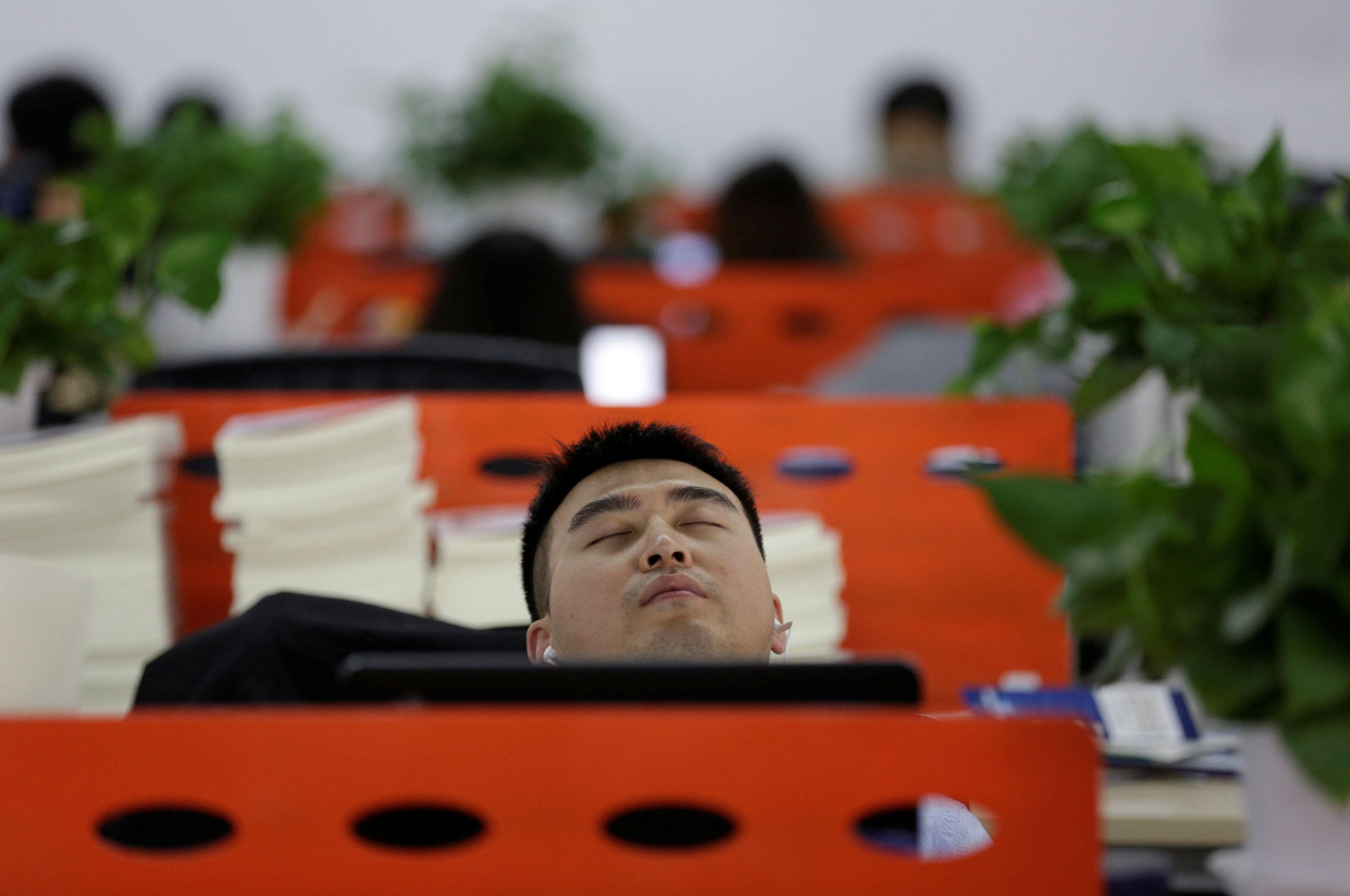April 17, 2019
Three small numbers are making big waves in China. The digits 9-9-6, a shorthand for 9am to 9pm, six days a week, have become a rallying cry for tech workers frustrated with their bruising work schedules. In recent weeks, what began as a discussion among a few programmers has morphed into a broader debate about working conditions in China's most important industry.
It's a fascinating story, not least because it's a rare example of a labor protest in China organizing and going viral despite the country's sophisticated government-backed censorship.
But the 9-9-6 debate also exposes deeper tensions within the Chinese system:
China's political ideals vs its capitalist growth engine: Under the Communist Party, China is meant to be a workers' paradise, but labor laws limiting work to 40 hours per week plus 36 hours of overtime per month are rarely enforced. China is the only country in the world that's come close to replicating the success of Silicon Valley, partly because of workers' willingness to submit to the grind. But life is short, and as living standards rise, it's inevitable that well-to-do tech workers with globally attractive skills will start to demand more free time.
Tech billionaires vs "worker bees": Leading Chinese tech entrepreneurs have pushed back against complaints about the 9-9-6 movement, effectively saying, "suck it up, slackers!" Jack Ma, the billionaire founder of e-commerce giant Alibaba (and a member of China's Communist Party), said tech workers should consider it a privilege to work such a tough schedule. Another Chinese billionaire, JD.com founder Richard Liu, warned the company's future would be in jeopardy if people were no longer willing to put in the time, saying "slackers are not my brothers."
But here's the problem: Both the Chinese government and industry bosses need obedient tech workers. China's technology industry is increasingly the engine of its economy. The government needs tech workers to keep living standards rising across the country and create new economic opportunities as growth starts to slow. Tech companies need their high-skilled workers to compete in a cut-throat industry. No wonder workers say they're feeling squeezed and that the status quo is unsustainable.
Upshot: If that's true, what does it say about the sustainability of the Chinese tech-led growth model?Related Articles Around the Web
More For You
- YouTube
Gotta maximize sleigh-holder value. #PUPPETREGIME
Most Popular
- YouTube
On Ask Ian, Ian Bremmer breaks down the steady escalation of US pressure on Venezuela and why direct military action is now a real possibility.
US President Donald Trump arrives to announce reciprocal tariffs against US trading partners in the Rose Garden of the White House in Washington, DC, USA, on April 2, 2025.
POOL via CNP/INSTARimages.com
From civil conflicts to trade wars to the rise of new technologies, GZERO runs through the stories that have shaped this year in geopolitics.
Ukrainian serviceman walks near apartment buildings damaged by Russian military strike, amid Russia's attack on Ukraine, in the frontline town of Kostiantynivka in Donetsk region, Ukraine December 20, 2025.
Oleg Petrasiuk/Press Service of the 24th King Danylo Separate Mechanized Brigade of the Ukrainian Armed Forces/Handout via REUTERS
Ukrainian intelligence services assassinated a senior Russian general on the streets of Moscow on Monday, detonating a bomb strapped to his car.
© 2025 GZERO Media. All Rights Reserved | A Eurasia Group media company.
